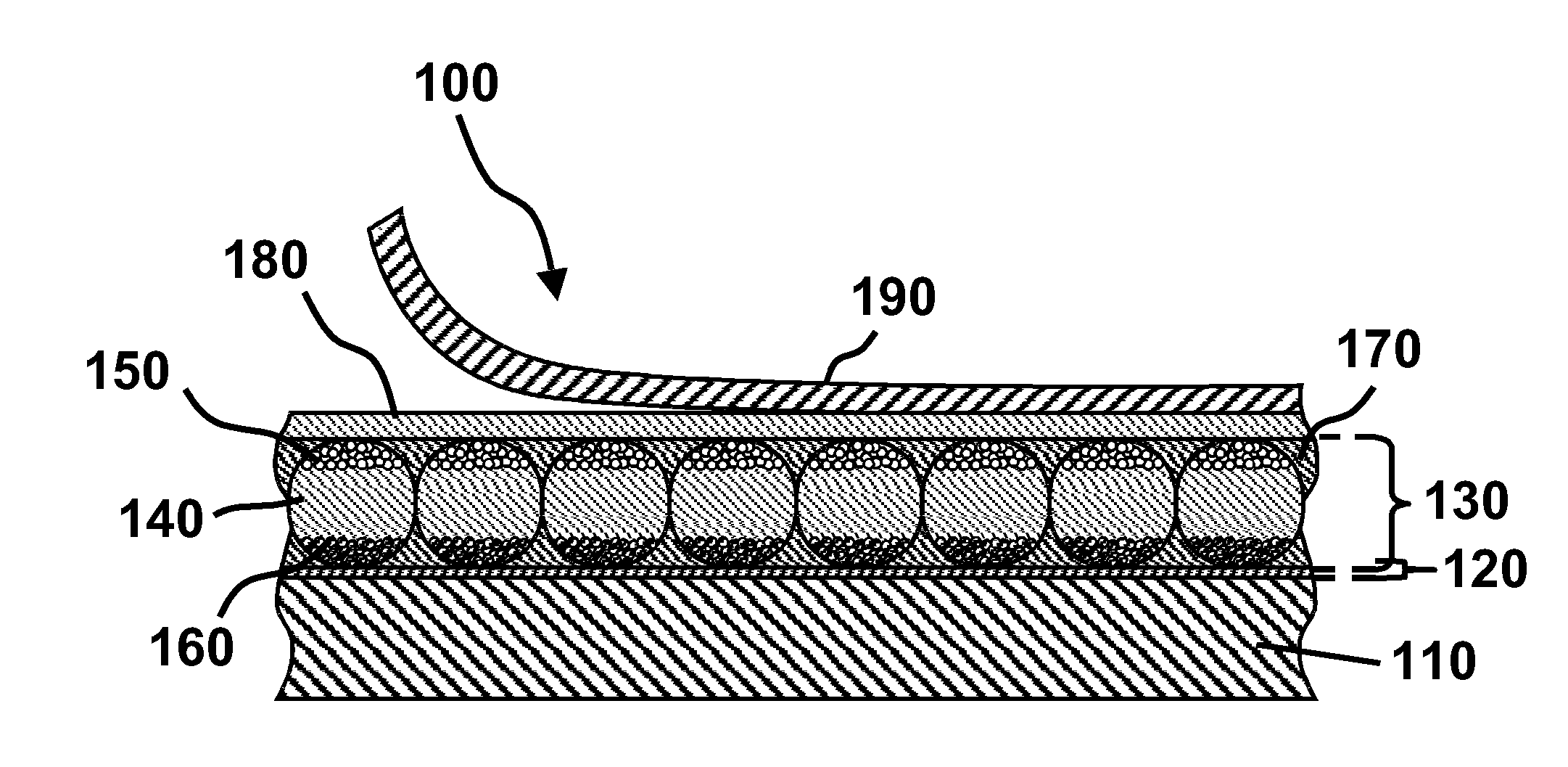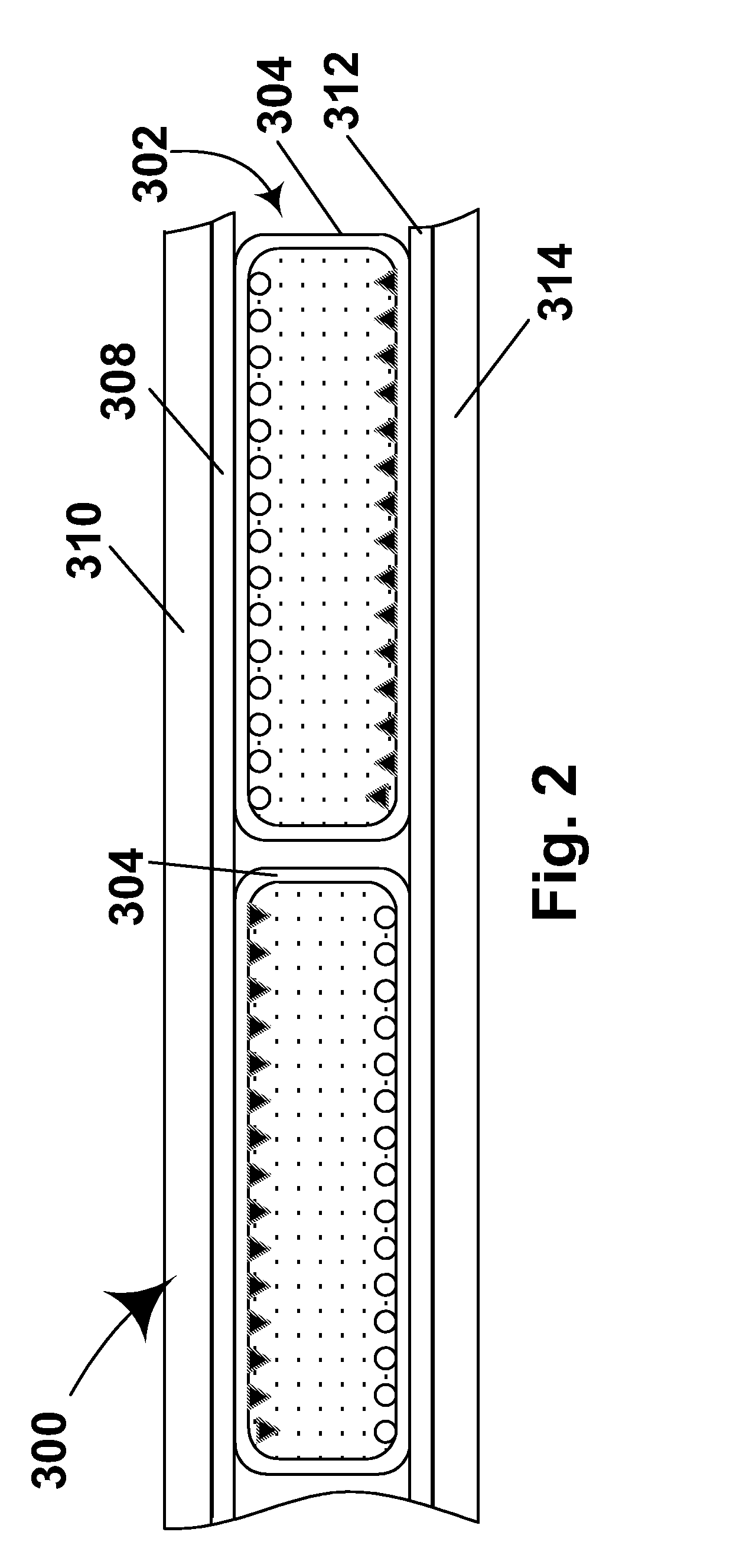Electro-optic display and lamination adhesive for use therein
a technology applied in the field of optical display and adhesive composition, can solve the problems of preventing widespread use, imposing stringent requirements on lamination adhesive, inadequate service life of optical display, etc., and achieves the reduction of the handling of devices, the effect of increasing the lamination strength and reducing the size of the thermal oven
- Summary
- Abstract
- Description
- Claims
- Application Information
AI Technical Summary
Benefits of technology
Problems solved by technology
Method used
Image
Examples
Embodiment Construction
[0110] This Example describes the preparation of a display of the present invention using a gelatin / acacia microencapsulated electrophoretic medium.
[0111] A Preparation of Oil (Internal) Phase
[0112] To a 1L flask is added 0.5 g of Oil Blue N (Aldrich, Milwaukee, Wis.), 0.5 g of Sudan Red 7B (Aldrich), 417.25 g of Halogenated hydrocarbon Oil 0.8 (Halogenated Hydrocarbon Products Corp., River Edge, N.J.), and 73.67 g of lsopar-G (Exxon, Houston, Tex.--"ISOPAR" is a Registered Trade Mark). The mixture is stirred at 60.degree. C. for six hours and is then cooled to room temperature. 50.13 g of the resulting solution is placed in a 50 mL polypropylene centrifuge tube, to which is added 1.8 g of titanium dioxide (TiO.sub.2) (E. I. du Pont de Nemours & Company, Wilmington, Del.), 0.78 g of a 10% solution of OLOA 1200 (Chevron, Somerset, N.J.), in Halogenated hydrocarbon Oil 0.8, and 0.15 g of Span 85 (Aldrich). This mixture is then sonicated for five minutes at power 9 in an Aquasonic Mode...
PUM
 Login to View More
Login to View More Abstract
Description
Claims
Application Information
 Login to View More
Login to View More - R&D
- Intellectual Property
- Life Sciences
- Materials
- Tech Scout
- Unparalleled Data Quality
- Higher Quality Content
- 60% Fewer Hallucinations
Browse by: Latest US Patents, China's latest patents, Technical Efficacy Thesaurus, Application Domain, Technology Topic, Popular Technical Reports.
© 2025 PatSnap. All rights reserved.Legal|Privacy policy|Modern Slavery Act Transparency Statement|Sitemap|About US| Contact US: help@patsnap.com



